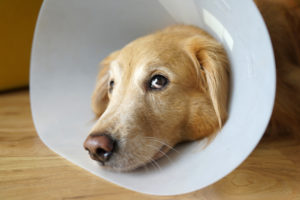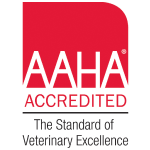There are many reasons hot spots develop in dogs, but some of the most common causes are allergies and parasites. These hot spots can be very painful and uncomfortable for your dog, which will lead to more scratching at them or even chewing and licking – eventually leading to infection. In this article, we’ll discuss what hot spots are, how they form, what you can do to prevent them, and some tips on treating hot spots for your dog.
How do I know if my dog has a “hot spot”?
If your pet has an intense interest in licking and scratching in a particular area or if you see any hair loss, irritated skin with oozing, crusty or scabby areas your pet may have a “hot spot”, otherwise known as acute moist dermatitis. These areas may initially look like an insect bite, but due to repeated scratching or chewing, grow in size. In addition to the irritating discomfort of the hot spot, they can also become infected with bacteria. The cycle of scratching and irritation continues as the hot spot becomes increasingly more painful, irritated, and infected.
What causes hot spots on my dog?
Hot spots in pets are caused by many different reasons. They can be due to allergies or parasites, such as flea bites. If your pet is frequently in water, such as swimming in one of our beautiful Minnesota lakes, areas of fur can become matted and moist. Combined with our humid weather, this creates a perfect environment for bacteria to thrive.
In addition to issues as stated above, some food allergies can also cause dermatologic problems which can lead to hot spots.
How do I treat hot spots?
Treating the hot spot is important, but discovering the root cause of the painful itching is the key to ensuring it doesn’t become a recurring issue. We suggest gently clipping fur around the affected area, and cleaning the area with a gentle cleanser. However, we recommend scheduling an appointment with one of our veterinarians, as we can help determine the underlying cause of the hot spot. This may ultimately lead to your pet being prescribed an antibiotic, either topical or for internal use. Also, although your dog may not particularly enjoy it, they may need to wear a “cone of shame”.

We suggest you do not apply any over-the-counter treatments, including creams, sprays, or essential oils unless suggested by one of the members of our veterinary team. Some of these items can be toxic to your pet.
How can I prevent hot spots in my dog?
You can reduce hot spots in your dog by following these tips:
- Keep your pet clean and bathe them regularly.
- Feed them a quality diet
- Keep your pet on their prescribed flea and tick preventives
- Avoid allergens, such as flea bites, mites, pollen from plants, etc
- After swimming, be sure to dry your dog thoroughly.
Hot spots are a painful, and tremendously uncomfortable condition that can affect your pet. If left untreated, they could lead to an infection or other complications. It’s important to identify the symptoms of hot spots so they can be treated before things get out of hand. Schedule a consultation with our South Hyland veterinary staff today by calling 952-884-1868.
Image credit: magdasmith / iStock / Getty Images Plus



